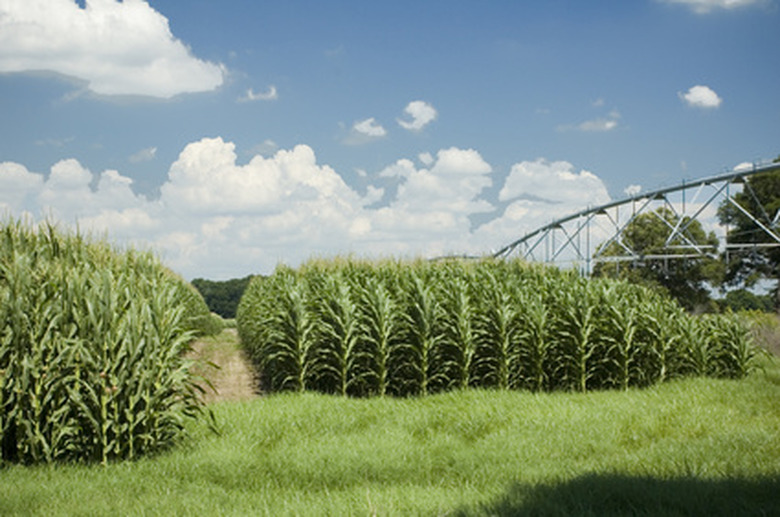What Types Of Soil Does Iowa Have?
As one of the most agriculturally productive U.S. states, Iowa is blessed with vast expanses of deep, fertile soils. Not all Hawkeye State soils, however, are equal. Some, says the University of Idaho's College of Agriculture and Life Sciences, are relatively young, containing only a single layer (horizon) of topsoil. Each of Iowa's more than 450 individual soil subtypes belongs to one of the 12 soil orders the United States Department of Agriculture (USDA), established in 1975.
Alfisols
Alfisol soils, common in northeastern, southeastern and south central Iowa, are fertile soils that form in forests. They are common in many humid climates, and cover 13.9 percent of the U.S. land mass, says the University of Idaho. Nearly 18 percent of the world's people rely on the alfisols for sustenance. These soils have subsurface layers of clay. Udalfs, the alfisol suborder found in Iowa, is the type most common in humid climates.
- As one of the most agriculturally productive U.S. states, Iowa is blessed with vast expanses of deep, fertile soils.
- Some, says the University of Idaho's College of Agriculture and Life Sciences, are relatively young, containing only a single layer (horizon) of topsoil.
Entisols
Entisols include all young soils that don't qualify for inclusion in any of the other 11 soil classifications. They have a single layer ("A" horizon) of topsoil. Because so many soils qualify as entisols, this category has numerous uses. Entisols cover about 16 percent of the world's land mass and about 12 percent of the United States, including major river valleys where huge populations of people live. The south central, western and northeastern regions of Iowa contain soils belonging to the fluvent and orthent entisol suborders. Fluvents are common to floodplains. Orthents are entisols that don't fit in another suborder.
- Entisols include all young soils that don't qualify for inclusion in any of the other 11 soil classifications.
Inceptisols
Like entisols, inceptisols are young soils lacking in layers. They are common in sloping mountain regions, including watersheds, forest and recreational areas. Accounting for about 17 percent of the world's–and nearly 10 percent of the United States'–land masses, inceptisols are the largest soil group. Nearly 1/5 of the world's people depend on inceptisols for food. Udepts, humid climate inceptisols, are present in a small area of south central Iowa.
Mollisols
Mollisols blanket the state of Iowa, except for two narrow strips in the northeastern and southern parts of the state. Responsible for the grasslands of America's prairies, mollisols are fertile soils topped with a thick layer of organic material. They make up over 21 percent of U.S. soils and 7 percent of soils worldwide. They are invaluable for agricultural purposes. Iowa's mollisols fall into two suborders. Udolls in the western and central eastern state are humid-climate mollisols. Aquolls in central Iowa have water tables near their surfaces.
- Like entisols, inceptisols are young soils lacking in layers.
- Mollisols blanket the state of Iowa, except for two narrow strips in the northeastern and southern parts of the state.
